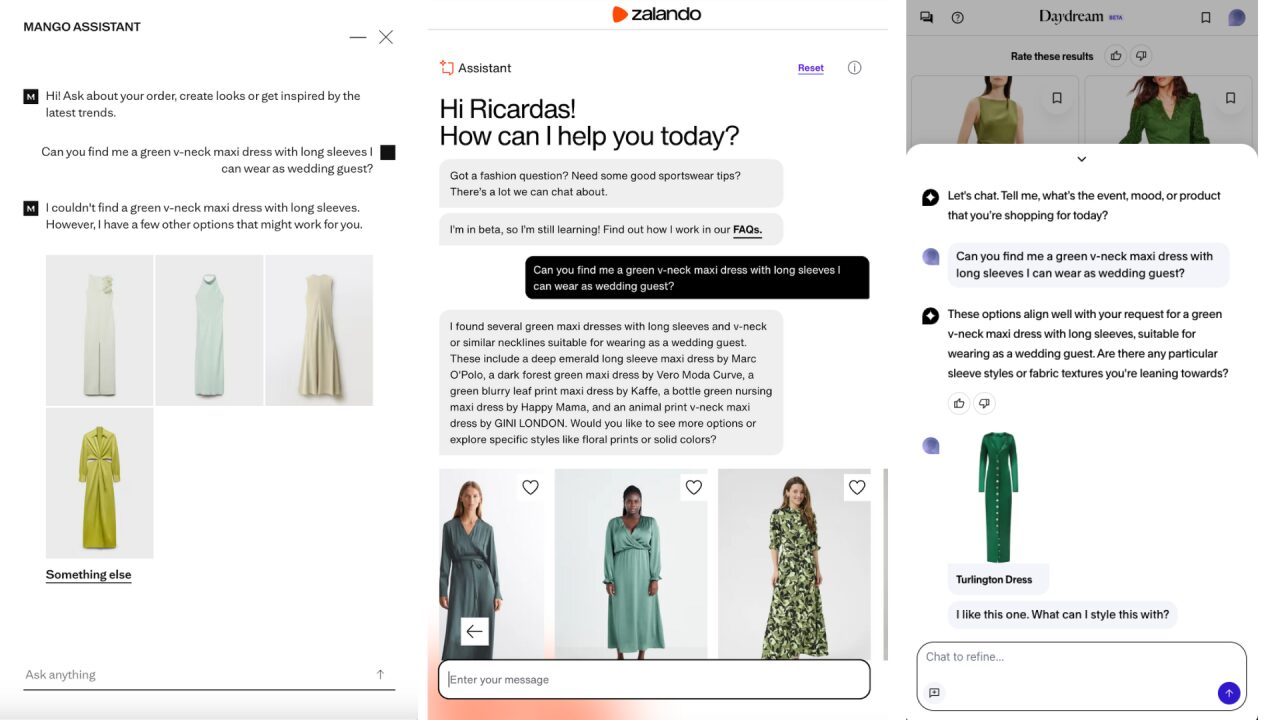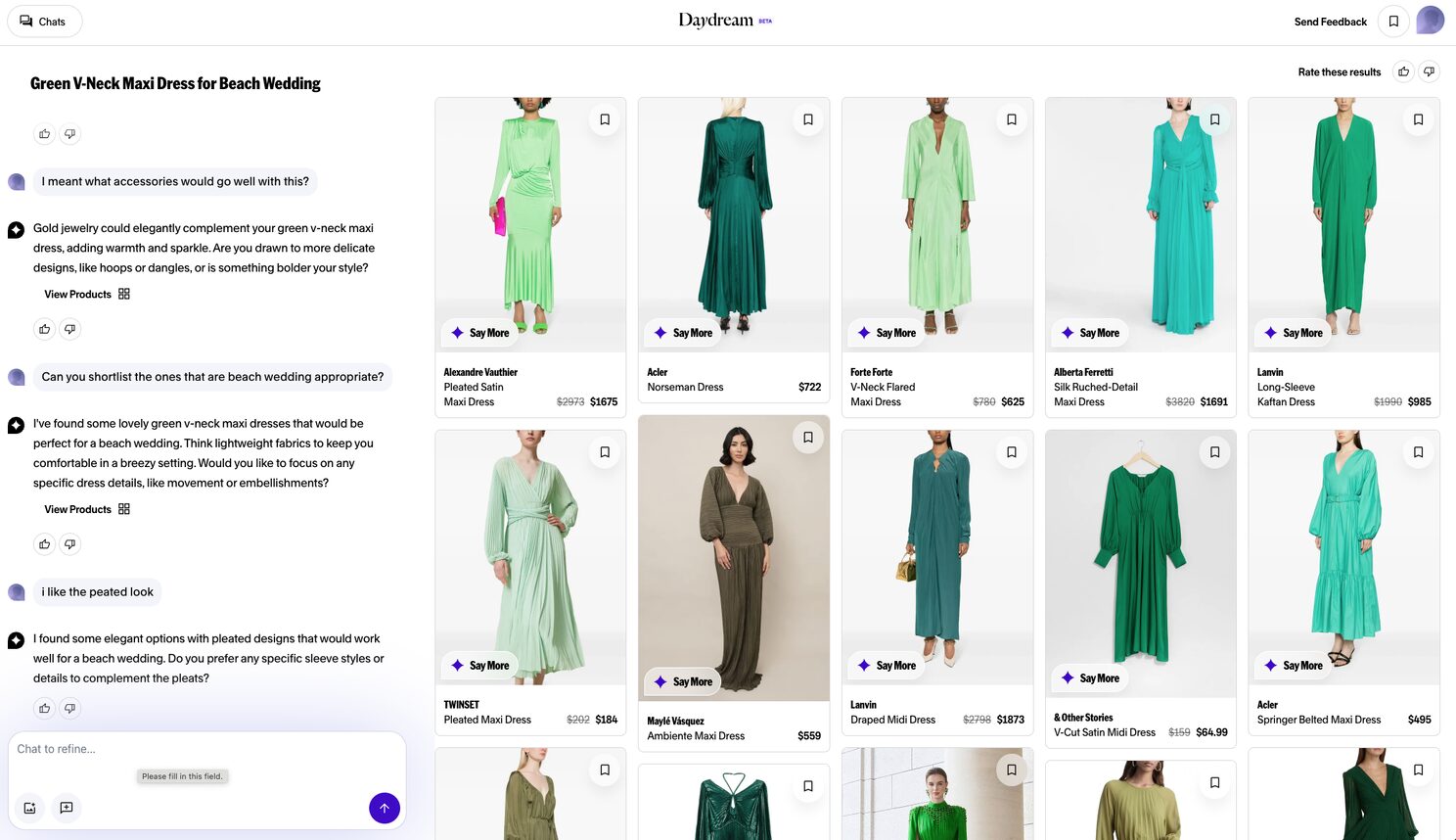Agentic AI is already shaping how your customers shop, but if your products don’t understand human context and intent, even the smartest assistant returns guesses instead of great matches.

For over a decade, we’ve leaned into the promise of a personal stylist in your pocket. With the recent explosion of agentic AI systems, which are smarter, autonomous, built to understand and act on natural language in real-time, that vision is finally within reach.
But (there’s always a but) here’s the catch: even the most advanced AI assistants can’t deliver magic if the foundation they’re built on is broken. And as of today, the most fundamental layer of retail information, the product detail page (PDP), isn’t ready for them.
Even the smartest AI falls flat if your PDP doesn’t contain structured, semantic, fashion-relevant language that includes occasion, intent, aesthetic, and practicality. The moment a customer says, “I need something for a windy beach wedding,” the request clashes with a system that only runs on keywords such as “green dress” and “long sleeves.” It needs to know wind resistance, lining, modesty, and style nuance.
Most PDPs can’t cater to that. They’re still built around SKU logic, not shopper logic.
Let’s be clear: agentic AI is here, it’s real, and it’s already reshaping how customers search, discover, and decide. Tools like Zalando’s Assistant, MANGO’s Stylist, and Daydream’s new AI-native shopping experience are accelerating the change. But when I stress-tested them, one thing surfaced:
AI agents can’t find what isn’t there.
Let’s have a closer look at the AI-driven stylists that I’ve tested. With OpenAI’s GPT-4 Turbo enriching 50,000 product attributes a week, Zalando is clearly ahead of the pack. And yet even they report only 75% accuracy. In human terms, that’s one in four product tags being wrong, missing, or too vague to use.

In testing, Zalando’s assistant handled context-switching fluidly, but buckled under complex prompts like “beach wedding, heavy wind, sun protection, belted or not.” It returned partial matches, best guesses, and in some cases, maternity wear.
MANGO’s assistant brings a more stylistic tone and opens with curated outfits, skipping prices to maintain inspiration. However, the same upstream failures surface fast. When the assistant was asked to avoid sheer or see-through dresses for a formal occasion, it initially failed. Even after being explicitly told what “wedding-appropriate” means, the right product failed to be presented.
It was obvious that MANGO hit the same structural wall as Zalando: if the product catalogue lacks a clear “occasion” tag or style descriptors, the agent simply can’t find what’s needed. The best proof? The exact product I asked for, which Mango’s AI said didn’t exist, was immediately findable with a basic keyword search. It succeeded where the “smart” assistant failed.
Daydream, launched by Julie Bornstein and backed by $50 million in funding, may be the most fluid and visionary example I am referring to in this blog. It merges Pinterest-like discovery with conversational nuance.
As Daydream’s founder Julie Bornstein told Vogue Business: “Searching for a floral dress and having to scroll through endless options without curation is really difficult. (…) Having an iterative dialogue of what the customer is looking for — beyond just a dress — connects with what they’re really emotionally looking for.”

it seems like Bornstein has understood the assignment, but in practice, even Daydream can’t dodge the data problem. When asked for a green v-neck maxi with long sleeves for a wedding, it delivered beautiful options – but not exactly the ones I was looking for.
Every one of these tools shares the same flaw: they are speaking a new language, but reading from an old script.
Retailers have spent years building product data for internal classification and plain keywords for Search Engines but haven’t focused on understanding their customers. Color, size, price, and basic descriptions rule the PDP. What’s missing are the nuanced attributes that matter to both people and machines:
Agentic AI relies on this kind of enriched context to function properly. But if your PDP doesn’t explicitly include it – not just with bullet points, but in structured, machine-readable format – you’re risking being invisible in this new world.
It’s not that your AI assistant isn’t working. It’s that your product isn’t speaking the language it understands.
The fashion industry has already entered a share-gain market. Growth has stalled, margins are squeezed, and competition is no longer between channels but between experience layers.
You can’t win on assortment alone. You have to win on relevance.
Agentic AI can create that relevance by turning every shopper interaction into a curated, human-tone conversation. But only if you feed it the right signals. That means rethinking how you onboard product data, how you tag for discovery, and how you manage that data across systems. It’s not just about personalization anymore. It’s about product fluency.
You don’t need a different tech stack. You need smarter product attribution.
This is where Mapp Fashion comes in.
We don’t just plug into your PDP. We teach it to speak the language of fashion—contextual, emotional, aesthetic, and behavioral. Our enrichment engine is both powered by Ai and human industry expertise. It boasts with 18.000+ fashion-specific attributes, transforming bland catalogues into dynamic, intent-matching experiences that AI agents and humans alike can understand.
You don’t need to wait for the future. It’s already here. The only question is: can your stack speak the right language?